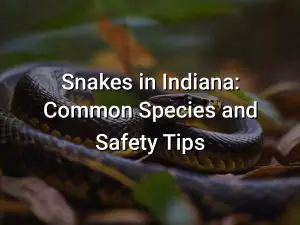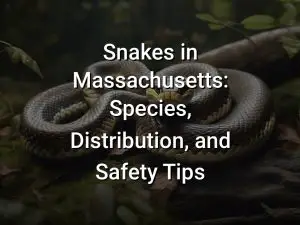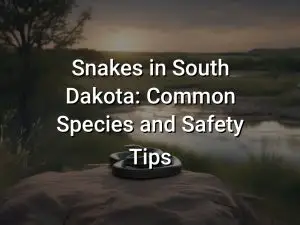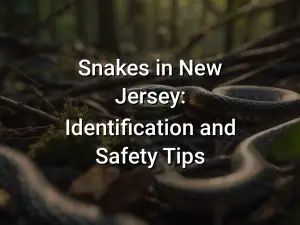Snakes in Oklahoma: A Guide to the Venomous and Non-Venomous Species
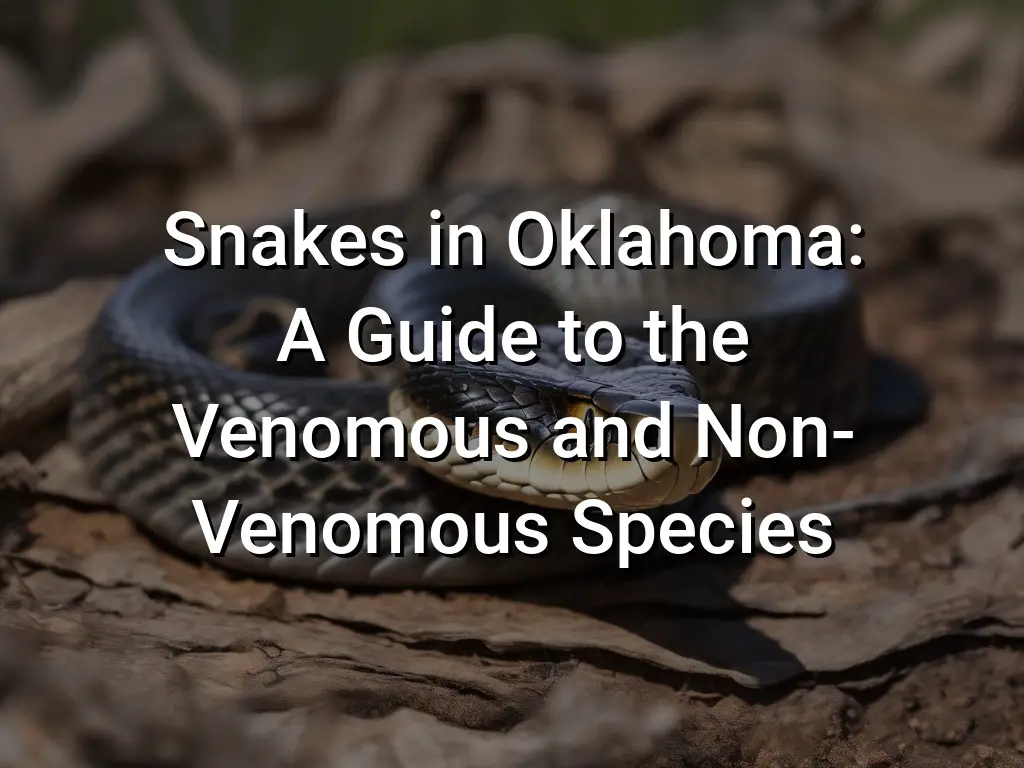
Oklahoma may not be the first place that comes to mind when you think of snakes, but the state is home to a variety of fascinating snake species. Some of these snakes are harmless and even beneficial to the ecosystem, while others should be approached with caution. In this guide, we’ll explore both the venomous and non-venomous snakes of Oklahoma, providing you with valuable information to help you understand and appreciate these slithering creatures.
From the notorious Western Diamondback Rattlesnake to the harmless and colorful Eastern Hognose Snake, Oklahoma is home to a diverse range of snake species. While encountering a venomous snake can be a cause for concern, it’s important to remember that these creatures play a vital role in the ecosystem. So whether you’re a snake enthusiast or simply curious about the snakes of Oklahoma, join us as we dive into the world of these fascinating reptiles.
Quick Links
Venomous Snakes in Oklahoma
Oklahoma is home to several species of venomous snakes, which can pose a threat to humans and animals. It’s important to be aware of these snakes and understand how to identify them in order to minimize the risk of encounters and potential snake bites.
Here are some of the venomous snakes you may encounter in Oklahoma:
- Western Diamondback Rattlesnake: This is the largest venomous snake in Oklahoma, with a distinct diamond pattern on its back and a rattling tail.
- Timber Rattlesnake: Also known as the Canebrake Rattlesnake, this snake has a series of dark bands on its body and a rattle on its tail.
- Prairie Rattlesnake: This species can be found in western and central Oklahoma, and it has a series of dark blotches on its body and a rattle on its tail.
- Copperhead: The Copperhead has a distinctive copper-colored head and a series of hourglass-shaped bands on its body.
- Cottonmouth: Also known as the Water Moccasin, the Cottonmouth has a bulky body, a dark coloration, and a white mouth.
If you encounter any of these venomous snakes in Oklahoma, it’s important to give them a wide berth and avoid any attempts to handle or disturb them. If you or someone you know is bitten by a venomous snake, seek immediate medical attention and try to keep the affected person calm and still.
Remember, prevention is key when it comes to venomous snakes. Be cautious when exploring natural areas, watch where you step or place your hands, and be mindful of the surroundings. By educating yourself about the venomous snakes in Oklahoma, you can better protect yourself and appreciate the wildlife in the state.
Non-Venomous Snakes in Oklahoma
Oklahoma is home to a variety of non-venomous snakes that are harmless to humans. These snakes play an important role in maintaining a balanced ecosystem and are often misunderstood or feared. Here are some non-venomous snakes you may encounter in Oklahoma:
- Eastern Hognose Snake: The Eastern Hognose Snake is known for its dramatic defensive displays, such as flattening its neck to appear larger or playing dead. It can be found in a variety of habitats, including forests, fields, and prairies.
- Rat Snake: Rat Snakes are large, non-venomous snakes that are excellent climbers. They are skilled hunters and are known for their ability to control rodent populations. Rat Snakes are often found in barns, sheds, and other structures where they can easily access prey.
- Black Rat Snake: The Black Rat Snake is a subspecies of the Rat Snake and is often found near water sources, such as rivers or lakes. It is a powerful constrictor and feeds on rodents, birds, and eggs.
- Garter Snake: Garter Snakes are commonly found throughout Oklahoma and are known for their distinct striped patterns. They are harmless to humans and feed on a variety of prey, including small rodents, amphibians, and fish.
- Coachwhip Snake: The Coachwhip Snake is a fast and agile snake known for its impressive speed and ability to climb trees. It can be found in a variety of habitats, including grasslands, sand dunes, and shrublands.
- Western Ribbon Snake: The Western Ribbon Snake is a slender snake with a distinctive yellow or white stripe down its back. It is often found near water and feeds on small fish, frogs, and insects.
It is important to remember that even though these snakes are non-venomous, it is always best to observe them from a distance and avoid handling them. Snakes play a vital role in the ecosystem and should be respected and protected.
Conclusion
Snakes in Oklahoma are a diverse group of reptiles, with both venomous and non-venomous species found throughout the state. It’s important to be aware of the different species and their characteristics to ensure your safety and the safety of others.
Remember, if you encounter a snake, it’s best to admire it from a safe distance and not to disturb or provoke it. Most snakes in Oklahoma are non-venomous and play an important role in the ecosystem by controlling rodent populations. By understanding and respecting snakes, we can coexist with these fascinating creatures in our natural environment.


